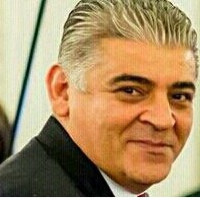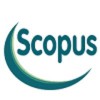Research Article
Review Article
Aim & Scope
JOLS will consider for publishing on the following topics:
Ottoman period political, military, social, economic, cultural life
Ottoman period language and literature
Ottoman period art, architecture
Articles in JOLS can be submitted in a form of:
regular research articles
reviews -
monographs
Conference proceedings – (In the papers presented at scientific meetings such as symposiums or congresses, the name, place and date of the scientific meeting should be specified)
Articles produced from postgraduate theses (the information of the decision-maker to publish this type of articles from the thesis should be stated in the footnote
Other kinds of manuscripts will be judged solely based on the scientific merit of data/research provided
Author Guidelines
Ethical Principles and Publication Policy
Journal of Ottoman Legacy Studies (JOLS) endorses the COPE (Committee on Publication Ethics) guidelines and will pursue cases of suspected research and publication misconduct (e.g. falsification, unethical experimentation, plagiarism, inappropriate image manipulation, redundant publication). For further information about COPE please see the website for COPE at http://www.publicationethics.org and journal's Publication Ethics and Malpractice Statement in below:
UTIES OF EDITORS AND THE EDITORIAL BOARD
Fair play and editorial independence
Editors evaluate submitted manuscripts exclusively on the basis of their academic merit (importance, originality, study’s validity, clarity) and its relevance to the journal’s scope, without regard to the authors’ race, gender, sexual orientation, ethnic origin, citizenship, religious belief, political philosophy or institutional affiliation. Decisions to edit and publish are not determined by the policies of governments or any other agencies outside of the journal itself. The Editor-in-Chief has full authority over the entire editorial content of the journal and the timing of publication of that content.
Confidentiality
Editors and editorial staff will not disclose any information about a submitted manuscript to anyone other than the corresponding author, reviewers, potential reviewers, other editorial advisers, and the publisher, as appropriate.
Disclosure and conflicts of interest
Editors and editorial board members will not use unpublished information disclosed in a submitted manuscript for their own research purposes without the authors’ explicit written consent. Privileged information or ideas obtained by editors as a result of handling the manuscript will be kept confidential and not used for their personal advantage. Editors will recuse themselves from considering manuscripts in which they have conflicts of interest resulting from competitive, collaborative, or other relationships/connections with any of the authors, companies or institutions connected to the papers; instead, they will ask another member of the editorial board to handle the manuscript.
Publication decisions
The editors ensure that all submitted manuscripts being considered for publication undergo peer-review by at least two reviewers who are expert in the field. The Editor-in-Chief is responsible for deciding which of the manuscripts submitted to the journal will be published, based on the validation of the work in question, its importance to researchers and readers, the reviewers’ comments, and such legal requirements as are currently in force regarding libel, copyright infringement and plagiarism. The Editor-in-Chief may confer with other editors or reviewers in making this decision.
DUTIES OF REVIEWERS
Contribution to editorial decisions
Peer review assists editors in making editorial decisions and, through editorial communications with authors, may assist authors in improving their manuscripts. Peer review is an essential component of formal scholarly communication and lies at the heart of scientific endeavour.
Promptness
Any invited referee who feels unqualified to review the research reported in a manuscript or knows that its prompt review will be impossible should immediately notify the editors and decline the invitation to review so that alternative reviewers can be contacted.
Confidentiality
Any manuscripts received for review are confidential documents and must be treated as such; they must not be shown to or discussed with others except if authorized by the Editor-in-Chief (who would only do so under exceptional and specific circumstances). This applies also to invited reviewers who decline the review invitation.
Standards of objectivity
Reviews should be conducted objectively and observations formulated clearly with supporting arguments so that authors can use them for improving the manuscript. Personal criticism of the authors is inappropriate.
Acknowledgement of sources
Reviewers should identify relevant published work that has not been cited by the authors. Any statement that is an observation, derivation or argument that has been reported in previous publications should be accompanied by the relevant citation. A reviewer should also notify the editors of any substantial similarity or overlap between the manuscript under consideration and any other manuscript (published or unpublished) of which they have personal knowledge.
Disclosure and conflicts of interest
Any invited referee who has conflicts of interest resulting from competitive, collaborative, or other relationships or connections with any of the authors, companies or institutions connected to the manuscript and the work described therein should immediately notify the editors to declare their conflicts of interest and decline the invitation to review so that alternative reviewers can be contacted.
Unpublished material disclosed in a submitted manuscript must not be used in a reviewer’s own research without the express written consent of the authors. Privileged information or ideas obtained through peer review must be kept confidential and not used for the reviewer’s personal advantage. This applies also to invited reviewers who decline the review invitation.
DUTIES OF AUTHORS
Reporting standards
Authors of original research should present an accurate account of the work performed and the results, followed by an objective discussion of the significance of the work. The manuscript should contain sufficient detail and references to permit others to replicate the work. Review articles should be accurate, objective and comprehensive, while editorial 'opinion' or perspective pieces should be clearly identified as such. Fraudulent or knowingly inaccurate statements constitute unethical behaviour and are unacceptable.
Data access and retention
Authors may be asked to provide the raw data of their study together with the manuscript for editorial review and should be prepared to make the data publicly available if practicable. In any event, authors should ensure accessibility of such data to other competent professionals for at least 10 years after publication (preferably via an institutional or subject-based data repository or other data centre), provided that the confidentiality of the participants can be protected and legal rights concerning proprietary data do not preclude their release.
Originality and plagiarism
Authors should ensure that they have written and submit only entirely original works, and if they have used the work and/or words of others, that this has been appropriately cited. Publications that have been influential in determining the nature of the work reported in the manuscript should also be cited. Plagiarism takes many forms, from “passing off” another’s paper as the author’s own, to copying or paraphrasing substantial parts of another’s paper (without attribution), to claiming results from research conducted by others. Plagiarism in all its forms constitutes unethical publishing behaviour and is unacceptable.
Multiple, duplicate, redundant or concurrent submission/publication
Papers describing essentially the same research should not be published in more than one journal or primary publication. Hence, authors should not submit for consideration a manuscript that has already been published in another journal. Submission of a manuscript concurrently to more than one journal is unethical publishing behaviour and unacceptable.
The publication of some kinds of articles (such as clinical guidelines, translations) in more than one journal is sometimes justifiable, provided that certain conditions are met. The authors and editors of the journals concerned must agree to the secondary publication, which must reflect the same data and interpretation of the primary document. The primary reference must be cited in the secondary publication.
Authorship of the manuscript
Only persons who meet these authorship criteria should be listed as authors in the manuscript as they must be able to take public responsibility for the content: (i) made significant contributions to the conception, design, execution, data acquisition, or analysis/interpretation of the study; and (ii) drafted the manuscript or revised it critically for important intellectual content; and (iii) have seen and approved the final version of the paper and agreed to its submission for publication. All persons who made substantial contributions to the work reported in the manuscript (such as technical help, writing and editing assistance, general support) but who do not meet the criteria for authorship must not be listed as an author, but should be acknowledged in the “Acknowledgements” section after their written permission to be named as been obtained. The corresponding author should ensure that all appropriate coauthors (according to the above definition) and no inappropriate coauthors are included in the author list and verify that all coauthors have seen and approved the final version of the manuscript and agreed to its submission for publication.
Disclosure and conflicts of interest
Authors should—at the earliest stage possible (generally by submitting a disclosure form at the time of submission and including a statement in the manuscript)—disclose any conflicts of interest that might be construed to influence the results or their interpretation in the manuscript. Examples of potential conflicts of interest that should be disclosed include financial ones such as honoraria, educational grants or other funding, participation in speakers’ bureaus, membership, employment, consultancies, stock ownership, or other equity interest, and paid expert testimony or patent-licensing arrangements, as well as non-financial ones such as personal or professional relationships, affiliations, knowledge or beliefs in the subject matter or materials discussed in the manuscript. All sources of financial support for the work should be disclosed (including the grant number or other reference number if any).
Acknowledgement of sources
Authors should ensure that they have properly acknowledged the work of others, and should also cite publications that have been influential in determining the nature of the reported work. Information obtained privately (from conversation, correspondence or discussion with third parties) must not be used or reported without explicit, written permission from the source. Authors should not use information obtained in the course of providing confidential services, such as refereeing manuscripts or grant applications, unless they have obtained the explicit written permission of the author(s) of the work involved in these services.
Peer review
Authors are obliged to participate in the peer review process and cooperate fully by responding promptly to editors’ requests for raw data, clarifications, and proof of ethics approval, patient consents and copyright permissions. In the case of a first decision of “revisions necessary”, authors should respond to the reviewers’ comments systematically, point by point, and in a timely manner, revising and re-submitting their manuscript to the journal by the deadline given.
Fundamental errors in published works
When authors discover significant errors or inaccuracies in their own published work, it is their obligation to promptly notify the journal’s editors or publisher and cooperate with them to either correct the paper in the form of an erratum or to retract the paper. If the editors or publisher learns from a third party that a published work contains a significant error or inaccuracy, then it is the authors’ obligation to promptly correct or retract the paper or provide evidence to the journal editors of the correctness of the paper.
DISCLAIMER
Neither the editors nor the Editorial Board are responsible for authors’ expressed opinions, views, and the contents of the published manuscripts in the journal. The originality, proofreading of manuscripts and errors are the sole responsibility of the individual authors. All manuscripts submitted for review and publication in Journal of Ottoman Legacy Studies (JOLS), go under double-blind reviews for authenticity, ethical issues, and useful contributions. Decisions of the reviewers are the only tool for publication in the journal and will be final.
References
Committee on Publication Ethics (COPE). (2011, March 7). Code of Conduct and Best-Practice Guidelines for Journal Editors. Retrieved from http://publicationethics.org/files/Code_of_conduct_for_journal_editors_Mar11.pdf
Price Policy
Article submission charges and article processing charges is free.
Indexes
Citation Indexes
Other Indexes
Journal Boards
Auto-generated board - Please Edit This Title


Editors


Editorial Board


Slobodan Ilić was born 1961 in Sarajevo, Bosnia-Herzegovina. After earning his degrees in Middle Eastern Studies at Sarajevo University (1986: BA Turkology-Iranistik, 1987: Arabistic-Turkology), and MA in Ottoman Studies at Belgrade University (1992), he completed his doctorate in Ottoman History 1996 at the Otto-Friedrich-Universität in Bamberg, Germany. He taught in the Department of Oriental Studies at Sarajevo University (1988-1992), Department of History at Bilkent University, Ankara (1996-2003), Department of History at Eastern Mediterranean University, Famagusta (2003-2012), where he also served as the Department chair (2004-2009), and the Department of History at the Near East University, Nicosia (since 2012). He is member of the Editorial Board of Middle Eastern Literatures, Cambridge, a member of the Executive Committee of the International Association for Ottoman and Pre-Ottoman Studies (CIEPO), where he served also as the vice-president (2008-2018), and a member of the Executive Committee of the International Association for Ottoman Social and Economic History (IAOSEH). He participated in more than 50 international conferences, has lectured and published widely on the intellectual history of the Ottoman Balkans and the history of Sufism in the Balkans and Anatolia, especially on its more heterodox varieties. He is contributor to the third edition of the Brill Encyclopedia of Islam.

Marijan Premović was born in 1983 in Berane, Montenegro. He finished PhD at the Faculty of Philosophy, University of Belgrade in 2013, on the topic: Middle and Lower Polimlje and Upper Podrinje in the Middle Ages and became the youngest doctor of historical sciences in Montenegro. He is an Associate Professor at the Faculty of Philosophy, University of Montenegro. He is the author of three tree scientific monographs and of over 50 scientific papers, he participated in several scientific meetings and book promotions. He is currently the Vice Dean for Science and International Cooperation.




1970’de Almanya’nın Hilpoltstein şehrinde doğdu. Bebekken ülkeye geri dönünce doğum yeri hayatı boyunca bir karışıklıktan ibaret kaldı. Malum memlekette kimse yazımını bilmek zorunda değil. Bu yüzden olsa gerek belki elli değişik yazılışına tanıklık tanıklık etti. Ama Almanya ona geniş bir ufuk sağladı. Bir zamanlar annesi, dayısı, yengesi, kuzenleri, komşuları hep Almanya’da olunca orası sanki burasıymış gibi hayatın bir parçası oldu. Yollar, Yugoslavya, Marlboro, Johnny Walker, Nutella, Schwarzkopf, THY daha Türkiye’de bilinmezken onun için sıradan şeylerdi. Yıllar sonra bu markalar Türkiye’ye geldiğinde çocukluğunun ne kadar ayrıcalıklı olduğunu anladı. Ülkenin dışı, sekiz yaşından sonra yaşadığı Nebiyan’ın heybetli zirvelerine bakan o küçücük köyde her zaman onu celbetti.
Çocukken bir ara Karaman’da kaldı. Oradaki görüntüler net değil. O zamanlar her “Almancı” ailenin başına gelen onun da başına geldi. Aile dağıldı. Annesi 1975 Mayıs’ında çocuklarını kaptığı gibi baba toprakları Bafra’ya döndü.
Eğitimini Bafra ve Samsun’da tamamladı. Bir kış günü 28 Aralık 1996’da Berşan’la evlendi. İlayda ve İlber adında dünyalar güzeli iki çocukları oldu. Ağacı yaşken bükememiş olmalı ki ikisi de sayısalcı oldu. Biri zaten Bilgisayar Mühendisi, diğeri Fen Lisesi’nde küçük dağları ben yarattım havasında dolaşıyor. Ha bir de Boncuk adlı annesinin yadigârı kedileri ile yaşayıp gidiyorlar.
Pulları, dağları ve özellikle kitapları seviyor. Hele kitapları onun her şeyi. İster hastalık, ister tutku deyin 1983’ten beri varını yoğunu kitaplara harcıyor.
Allah nasip etti, kitaplar yazdı. Yıllardır, belki birileri okur diye Bosna Hersek, Karadağ, Sırbistan ve Balkanlar hakkında yazdıkça yazıyor.
Karadeniz’in dağlarına benzemese de 25 yıldır Burdur’da yaşıyor.
Fırsat buldukça Antalya’ya kaçıp operaya falan gidiyor. Sergi geziyor. Festivallere katılıyor.
Denizi pek sevmese de kanyonları, dağları, taşları seviyor. Bu sebepten o dağ senin bu dağ benim geziyor. “Dağlıyım ben” diyor. Valla Kanyonu’ndan Horma’ya, Arapapıştı’dan Tazı Kanyonu’na gitmedik yer bırakmadı. Çocukları küçücükken Sinop’ta Erfelek Şelaleri’ne de tırmandı, Saklıkent Kanyonu’nun sonuna gitmeye de çalıştı. Tabi bazen Turgut Şelalesi’nde olduğu gibi hayal kırıklığına uğradığı zamanlarda oldu. Olsun! Ne çıkar? Gün geldi Selge’den baktı dünyaya, gün geldi Yazılı Kanyon’dan. Bazen de Nebiyan Dağı gibi uludağları gözüne kestirdi. Sivas ve Afyon’da ayazın ne demek olduğunu öğrendi. İsis’de ayran içti. Pozantı’da hayallere daldı. Konya’da Mevlana, Bursa’da Yıldırım, Edirne’de Sinan, Samsun’da Mustafa Kemal, Van’da Selim, Kahramanmaraş’da Sütçü İmam, Malatya’da Battal Gazi oldu. Bir gece yarısı Antep’de beyran içmişliği, Edirne’de ciğer yemişliği var. Nemrut’da güneşin doğuşunu, Ortahisar’da sisin nasıl çöktüğünü gördü. Bazen Hacı Bayram’la bazen Hacı Bektaş’la ama en fazla da Yunus’la hem hal oldu. Çok çok eski zamanlarda Ağrı’nın gölgesi düştü üzerine. Süphan’a bakarak uyudu. En fazla kayan yıldızı Süphan’da seyretti mesela. Kimi zaman Kadirli Yoğunoluk, kimi zaman Andırın’ın Çokak Yaylası’nda gözünü açtı. Dünya’da Piva’nın geçit vermez dağlarını, Moraça’nın derin vadilerini, Mostar’ın hüznünü, Ganj’ın pisliğini, Yamuna’nın bataklığını, Vistül’ün ahengini, Ren’in korkunçluğunu, Sen’in romantizimini, Vardar ve İbar’ın kaynaklarını, Vltava’nın sevimsizliğini, Tuna’nın muazzamlığını gördü ama yine de “illa vatanım” dedi.
Fani gözleri çok yer gördü. Bakü’nün ve Prizren’in betonlaşmasına, Üsküp’ün Ortodokslaşmasına tanık oldu. Sarajevo. O hüzünlü şehirden nasıl turist avcısı bir şehir yaratıldığını üzülerek izledi. Tiflis’te Tamada’yı, Vilnius Trakai’de Karaimleri tanıdı. Paris’te Louvre’da Monalisa’nın gözlerine şöyle bir baktı. Ama bir arka odasındaki Sardanapal’ın Ölümü tablosunun önünde saatler geçirdi. Paris’e Eyfel’in tepesinden, Frankfurt’a Heleba’nın çatısından baktı. Barcelona’dan hiç etkilenmedi mesela. Roma’ya hayret etti. Floransa’da ne var yani demekle yetindi. Venedik’i hiç anlamadı. Dubrovnik ve Kotor’a bayıldı. Budva’nın kıyısından Adriyatik’e ayaklarını soktu. Novi Pazar, Akova (Bijelo Polje), Taşlıca (Pljevlja), Podgorica, Berane o kadar ondan ki. Bar ve Ulcinj’de, hiç unutmaz eşinin “Bak beni Karadağ diye başka bir yere getirmedin değil mi ?” sözüne muhatap oldu. Oralar o kadar bizden yani. Belgrad’dan Viyana’ya annesinin izinden yürüdü. Bebekken ana kucağında gezdiği yerleri kendi oğluyla defalarca arşınladı. Yeni Delhi’nin kaosu ile büyülenirken, Petra’da başka dünyalara yolculuk etti. Kabe’ye yüz sürdü. Mescid-i Nebevi’de gecenin bir yarısı namaz kıldı. Bir zamanlar Şam’da Türk olduğu için çok itibar gördü. Busra’da Peygamberin Rahip Basira ile olan karşılaştığı yerlere elini sürdü. Halep, Hama, Humus yıkılmadan önce oradaydı. Ne Köln Dom’undan ne La Sagrada Familia’dan ne Aziz Petrus Bazilikası’ndan etkilendi. Ne var ki Selimiye’de dizlerinin bağı çözüldü. Riga’da parklarda, Tallin’de sokaklarda, Prag’da belediye otobüslerinde, Viyana’da müzelerde, Budapeşte’de sokaklarda, Varşova’da kafelerde çok vakit geçirdi. Münih’te çocukluğunun Schöller kurabiyesini görünce heyecandan yerinde duramadı. Milano’da Balack Friday’a rastladı. Napoli’de polisin giremediği arka sokaklarda bile rahatça gezdi. Pompei’ye her gidişinde sanki ilkmiş gibi vay be dedi. Bled gölünü oğluşuyla birlikte tam turladı ama Hallstatt’a gece gitme gafletinde bulundu. Avusturya Alpleri’nde Rize mi güzel bura mı diye kafası karışmadı değil. Sofya’yı aklındaki gibi bulamadı, lakin Filibe’yi (Plovdiv) sevdi. Bükreş’in geçmiş ihtişamını gözünde canlandırmaya çalışırken, Bran’da Vlad’ın şatosuna bumuymuş dedi. Braşov’da peynirlerin tadına baktı. İlk sinagogu orada gördü. Estergon’da hüzne, Bratislava’da Türk korkusunun neler yaptırdığına tanıklık etti. Lüksemburg’dan bir şey anlamadı. Helsinki’nin sakinliği ona yaramadı. Belçika’da makoronları sevdi. Belgrad çok güzel ama Novi Sad’ın yeri ayrı dedi. Yenipazar zaten bizden. Tiran’da korkunun izlerine, Kroya’da tarihin nasıl değiştirildiğine güldü. Berlin’de müzeciliğe, Ljubljana’da insanların eğitim düzeyine hayran kaldı. Salzburg’da hâlâ aristokrasinin kol gezdiğini hissetti. Krakow’dan Varşova’ya giderken bir kompartımanı otuz kişi ile paylaştı. Tac Mahal’de yüzlerce Hintli ile türbeyi de gezdi. Trakai diye cennetten bir köşe olduğunu oraya gidince öğrenci. Keturiasdešimt Totoriu’da namaz kıldı. Cesis’te Türk şehitleri için fatiha okurken, Sigulda’yı boş geçmedi. Cesis’e giderken yolda Vangazi diye bir yerin olduğunu görünce ne diyeceğini şaşırdı. O kadar çok Balkanlar’da dolaştı, o kadar oralı oldu ki artık tanıdığı insanlar dâr-ı bekâya irtihallerine tanık olmaya başladı. Şimdilerde Machu Picchu ve Angkor Watt’a takmış durumda. Bazen de rüyasına Orhun’un hülyalı bozkırları giriyor. Kimi zaman Mete gibi Çin Seddini seyretmek istiyor. Allah ömür verirse oralara da giderim diyor. Her zaman THY ona torpil yapsın, ucuza bilet versin diye çok dilek tuttu ama bu dileği hiç gerçekleşmedi. Hele şu Çin Virüsü hayallerini yerle yeksan etti. Eğer avuç içi kadar bahçesi olmasa kafayı bile yiyebilirdi. Allah’tan üç beş makale, kitap ve bahçe derken bugünlere gelebildi.
Kızılından Karası’na çok deniz görmüşlüğü var. Hazar’la Baltığı birbirine çok benzetti. Kızıldeniz’in serinletmediğine, Atlas Okyanusu’nun insan sevmediğine hükmetti. Huyu kurusun Adriyatik’ten Akdeniz’e elini sokmadığı su kalmadı. Ölü Deniz’in gerçekten ölü olduğunu görünce şaşırdı kaldı.
Durmadan ağaç dikti. Özellikle çınar. Ara sıra devletin parkına diktiği ağaçlarla konuşurken görürseniz, sıkıntı yok. Deli değil. Sadece ağaçlarını çok sevdiğinden mazur görün.
Language Editors

Nihada Delibegović Džanić PhD, is Full Professor of English Language and Linguistics at the University of Tuzla, Bosnia and Herzegovina. She teaches linguistics courses at undergraduate and postgraduate levels. She holds a PhD. in Linguistics from the University of Osijek, Croatia. Her main interests are cognitive linguistics, phraseology and ELT methodology.

1983 yılında Akhisar / Manisa'da doğdu. 1994'te Ülkü İlkokulunu, ardından 2001'de Akhisar Anadolu Lisesini bitirdi. Lisans derecesini 2006 yılında Çanakkale Onsekiz Mart Üniversitesi Eğitim Fakültesi Türkçe Öğretmenliğinden, yüksek lisans derecesini 2009 yılında Balıkesir Üniversitesi Sosyal Bilimler Enstitüsü Türkçe Eğitimi Ana Bilim Dalından, doktora derecesini ise 2014 yılında Gazi Üniversitesi Eğitim Bilimleri Enstitüsü Türkçe Öğretmenliği Ana Bilim Dalından aldı. 2006-2009 yılları arası Balıkesir Üniversitesi Necatibey Eğitim Fakültesi Türkçe Eğitimi Bölümünde arş. gör., 2009-2014 arası Gazi Üniversitesi Gazi Eğitim Fakültesi Türkçe Eğitimi Bölümünde arş. gör. olarak çalıştı. 2014'ten bu yana da Balıkesir Üniversitesi Necatibey Eğitim Fakültesi Türkçe Eğitimi Ana Bilim Dalında arş. gör. dr. olarak çalışıyor. 2020 yılında doçent unvanı aldı.














